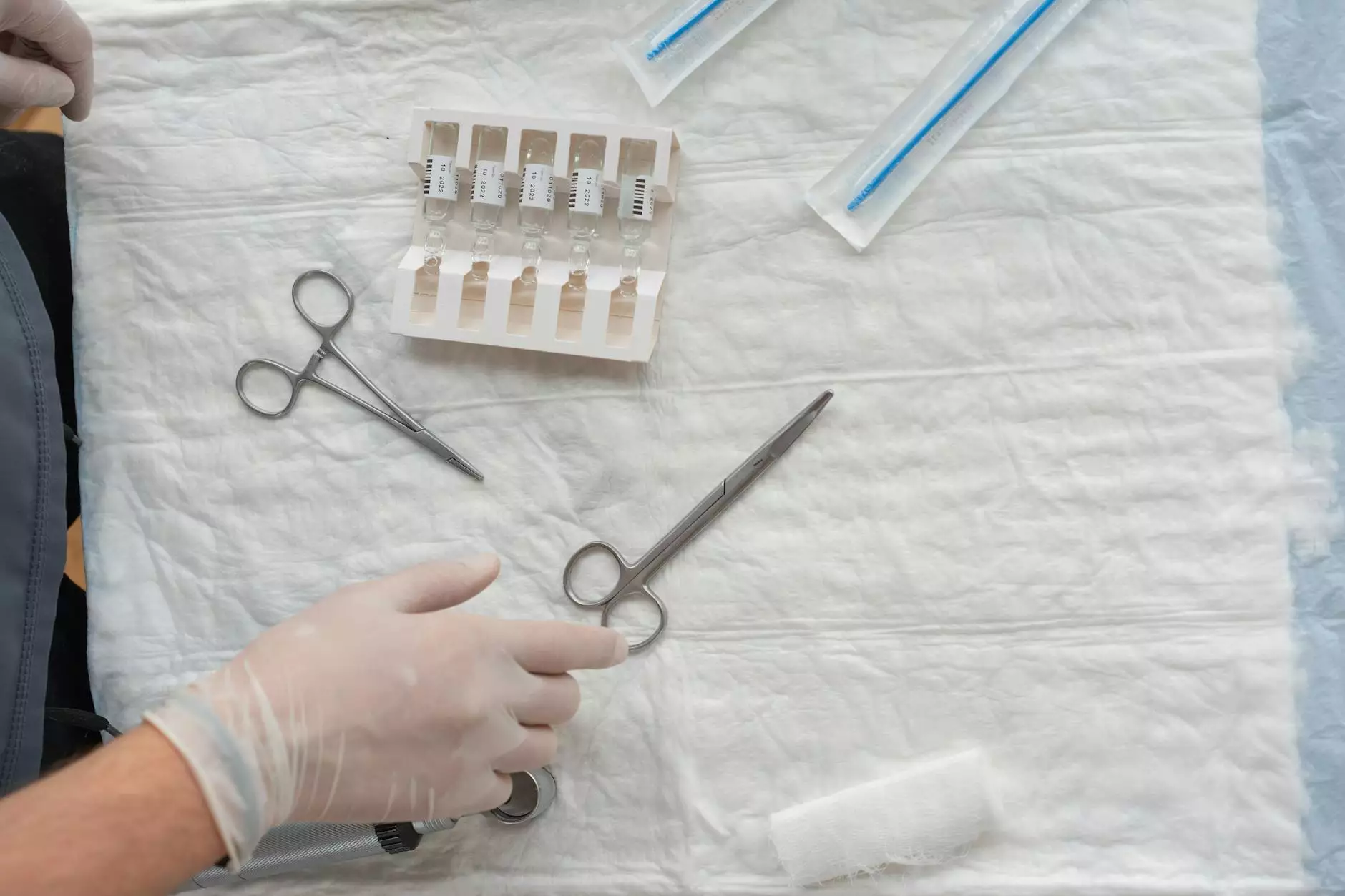The Comprehensive Guide to Sleeve Gastrectomy: Transforming Health and Well-being

Sleeve gastrectomy is a revolutionary surgical procedure that has gained immense popularity over the past decade. This innovative weight-loss surgery offers a multitude of health benefits while helping individuals achieve their desired body weight. In this article, we will delve deep into the procedure, its benefits, recovery process, and much more, providing you with a complete understanding of sleeve gastrectomy and how it can positively affect your life.
Understanding Sleeve Gastrectomy
Sleeve gastrectomy, often referred to as gastric sleeve surgery, involves the surgical removal of a significant portion of the stomach, resulting in a tubular or “sleeve-like” structure. The procedure is generally performed laparoscopically, which means it utilizes small incisions and special instruments, resulting in less pain and quicker recovery compared to traditional open surgery.
How Does Sleeve Gastrectomy Work?
The primary goal of sleeve gastrectomy is to limit food intake by reducing the stomach's capacity. During the procedure, approximately 75-80% of the stomach is removed, leaving behind a narrow sleeve-shaped stomach that can hold significantly less food.
Additionally, the surgery also affects gut hormones that control hunger, leading to a reduction in appetite and improved metabolic health. This mechanism helps patients lose weight and maintain a healthier lifestyle post-surgery.
Who is a Good Candidate for Sleeve Gastrectomy?
Not everyone is an ideal candidate for sleeve gastrectomy. Below are some common indicators of a suitable candidate:
- Individuals with a body mass index (BMI) of 40 or higher (morbid obesity), or a BMI of 35 or higher with obesity-related health issues.
- Those who have attempted numerous weight-loss programs without lasting success.
- Individuals who are motivated and have realistic expectations about the surgery and lifestyle changes necessary post-operation.
- People who do not have significant medical or psychological conditions that could interfere with the surgery or recovery.
The Benefits of Sleeve Gastrectomy
Sleeve gastrectomy offers a wide array of benefits, going beyond mere weight loss. Here are some of the significant advantages:
1. Significant Weight Loss
Patients typically experience rapid and substantial weight loss following sleeve gastrectomy. Depending on adherence to dietary guidelines and lifestyle changes, many individuals lose between 50 to 70% of their excess weight within the first 12-18 months after surgery.
2. Improved Health Conditions
One of the most compelling reasons to consider sleeve gastrectomy is its capacity to resolve obesity-related health conditions, including:
- Type 2 diabetes
- Hypertension (high blood pressure)
- Obstructive sleep apnea
- Joint pain and inflammation
- Heart disease
3. Enhanced Quality of Life
The post-operative improvements in health can lead to a vastly enhanced quality of life. Patients frequently report higher energy levels, improved mobility, and increased confidence, allowing them to engage in activities that were previously challenging or impossible.
4. Hormonal Changes
Sleeve gastrectomy alters the levels of hormones responsible for hunger and satiety. As a result, patients often experience reduced cravings and a decreased desire for unhealthy food choices, making it easier to adhere to a nutritious diet long-term.
Preparing for Sleeve Gastrectomy
Preparation is crucial for a successful sleeve gastrectomy experience. Below are essential steps every candidate should undertake:
- Consultation with a Specialist: Engage with an experienced bariatric surgeon who can evaluate your health, discuss your goals, and tailor a suitable plan.
- Pre-operative Assessments: Undergo required medical tests, such as blood tests, imaging studies, and psychological evaluations to ensure your fitness for surgery.
- Dietary Changes: Prior to surgery, patients may be instructed to follow a special diet to shrink the liver, making the surgery safer and easier for the surgeon.
- Setting Realistic Goals: Develop clear, achievable goals for weight loss and health improvements, preparing mentally for the changes ahead.
The Sleeve Gastrectomy Procedure
The sleeve gastrectomy procedure generally follows the steps outlined below:
- Preparation: Patients receive anesthesia and are positioned comfortably on the operating table.
- Incisions: The surgeon makes several small incisions in the abdomen to access the stomach.
- Stomach Removal: Using laparoscopic tools, the surgeon removes approximately 75-80% of the stomach, carefully preserving the sleeve structure.
- Closure: The remaining stomach, now in the shape of a sleeve, is stitched closed, and the incisions are sutured.
The entire procedure typically lasts around 1.5 to 2 hours and is considered relatively safe when performed by qualified professionals.
Post-Operative Care and Recovery
Recovery from sleeve gastrectomy varies from individual to individual, but the following outlines a general timeline for what to expect:
- Immediate Recovery: Patients are usually monitored for a day or two in the hospital. Pain management and hydration are prioritized.
- Diet Transition: Following surgery, patients progressively transition from clear liquids to a soft diet and eventually to solid foods over several weeks.
- Physical Activity: Light activities can often be resumed within a week, with a gradual increase in exercise encouraged after the initial recovery.
- Follow-Up Appointments: Regular follow-ups with the surgeon and a nutritionist are essential for monitoring progress and ensuring adherence to dietary recommendations.
Potential Risks and Complications
Like any surgical intervention, sleeve gastrectomy carries certain risks. While complications are rare, it’s essential to be aware of possible issues, including:
- Infection at the surgical site
- Blood clots
- Gastroesophageal reflux disease (GERD)
- Nutritional deficiencies due to dietary restrictions
- Stenosis or obstruction of the sleeve
Choosing an experienced surgeon and adhering to post-operative guidelines significantly mitigates these risks.
Long-Term Lifestyle Changes After Sleeve Gastrectomy
The journey of health transformation does not end with surgery. Successful long-term weight management requires a commitment to sustainable lifestyle changes, including:
1. Nutrition Management
Adopting a well-balanced diet rich in protein, fruits, vegetables, and whole grains is crucial. Regular consultations with a dietitian can aid in making informed dietary choices.
2. Regular Exercise
Engaging in regular physical activity helps maintain weight loss and improves overall health. Aim for a mix of cardiovascular, strength training, and flexibility exercises.
3. Support Groups
Joining a support group or network of individuals who have undergone similar surgeries can provide motivation, encouragement, and shared experiences.
4. Routine Medical Checkups
Regular visits to healthcare providers are essential for monitoring health and addressing any potential complications early on.
Conclusion: Is Sleeve Gastrectomy Right for You?
Sleeve gastrectomy can be a life-changing option for individuals struggling with obesity and related health issues. As we have explored throughout this article, the benefits range from substantial weight loss and improved health to a better quality of life. However, it is crucial to embark on this journey with adequate knowledge and preparation.
If you are considering sleeve gastrectomy, consult with medical professionals, weigh the pros and cons, and assess if this transformative option aligns with your personal health goals. The expert team at antalyahealth.com is ready to assist you in navigating this life-changing decision and ensuring you achieve optimal health.









